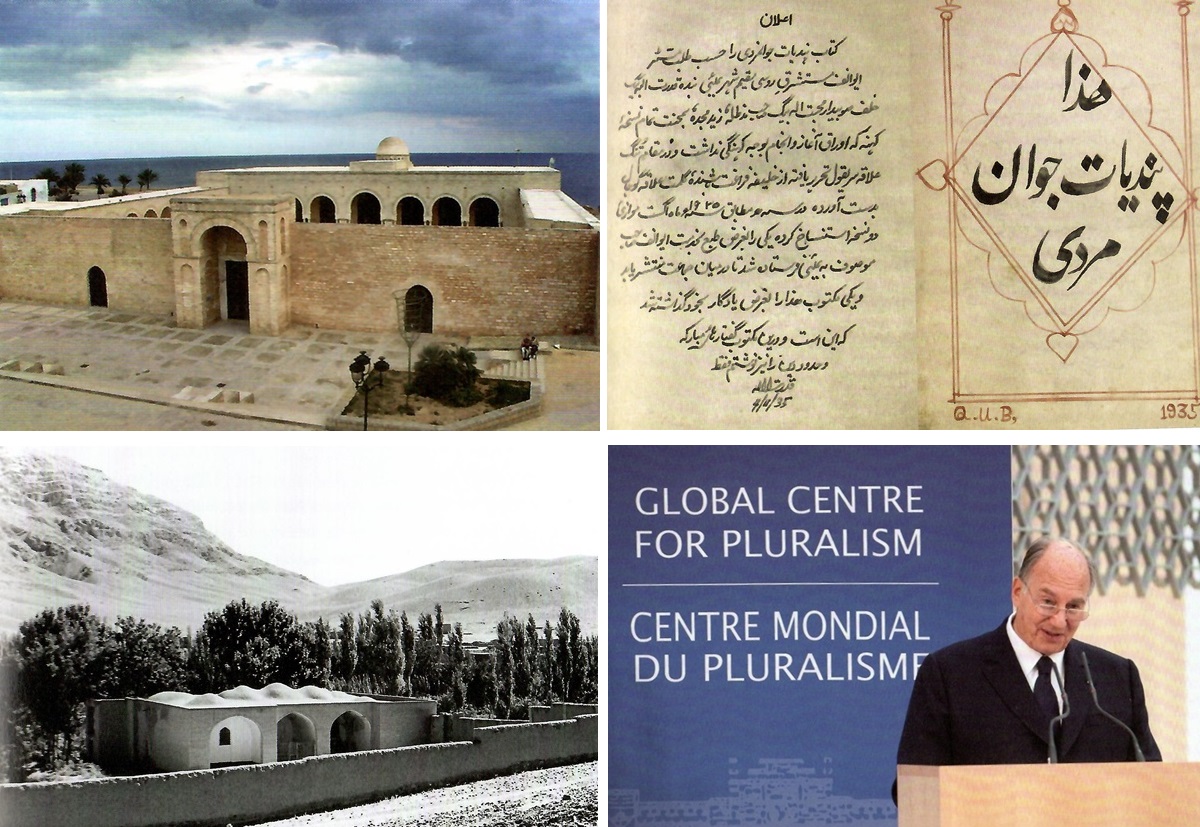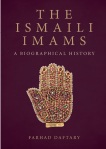INTRODUCED BY ABDULMALIK MERCHANT

A very happy moment in my life when I travelled to Brown University from Philadelphia in 1996. I snapped this picture of my beloved 49th Imam, His Highness the Aga Khan, and only realized that he was looking straight at my camera after I got the film processed in Philadelphia a couple of days later. Photo by Abdulmalik Merchant
Every Ismaili yearns to see the Imam of the Time. It’s a dream of a lifetime. Throughout history, past and present, Ismailis have travelled far and wide to earn this special moment of grace and barakah (happiness) in their lives. Since the advent of the 20th century, the 48th Imam, Mawlana Sultan Mahomed Shah, and the current 49th Imam, Mawlana Shah Karim (His Highness the Aga Khan), have graciously travelled to lands around the world to give their beloved murids (followers) this blessed opportunity. Scientific and technological advancements have speeded up and shortened the time-gap between visits of Mawlana Hazar Imam with his jamats, though even in these situations, some jamats such as those living in Central Asia, did not have the opportunity of a meeting with the present Imam and his predecessors for decades and centuries. What sustained their faith, sometimes under extremely difficult and extra ordinary circumstances, was their spiritual bond with the Imam of the Time.

His Highness the Aga Khan pictured amongst his followers in Badakhshan in May 1995.
A cornerstone of Ismaili doctrines has been the principle of the Unity of Imamat, that is the Ismaili belief and understanding that each Imam, being the bearer of the Noor (Light) of Imamat, is the same irrespective of his own age or the time he lives in. Thus in Ismaili writings, in addition to the importance of the physical didar (or glimpse) of the Imam, a strong emphasis has been laid on the followers to seek to attain the Beatific Vision of the Imam of the Time through special prayers, in addition to the ritual prayers. This idea is also conveyed in the sixth article of the Preamble of the Constitution of the Ismailis, which states:
“Historically and in accordance with Ismaili tradition, the Imam of the time is concerned with spiritual advancement as well as improvement of the quality of life of his murids. The imam’s ta‘lim lights the murid’s path to spiritual enlightenment and vision…”
The following collection of writings from Ismaili history articulates the importance of both the physical as well as the spiritual glimpse of the Imam of the Time. Our next reading in this short four-part series to commemorate Mawlana Hazar Imam’s 58th Imamat Day will consist of excerpts from the writings of Ismaili Imams on the subject of Imamat. This will be followed by contemporary voices on Imamat by members of the jamat.
1. An Inspiring Anecdote: Da’i Al-Mu’ayyad al-Shirazi ‘s Mulaqat with the 18th Ismaili Imam (or 8th Fatimid Caliph), Imam al-Mustansir Billah

A folio from the manuscript of al-Shirazi’s Sirat. Credit: The Institute of Ismaili Studies.
“I was taken near the place where from I saw the bright Light of the Prophethood. My eyes were dazzled by the Light. I shed tears of joy and felt as if I was looking at the face of the Prophet of Allah and of the Commander of the Faithful, Hazrat Ali. I prostrated myself before the one who is the fittest person to bow to. I wanted to say something, but I was awe-struck.
“I tried to speak but my tongue refused to move. People asked me to say what I wished to say. I could say nothing. The Imam said, ‘Leave him. Let his fear and awe subside’.
“After this, I rose. I took the holy hand of the Imam, placed it on my eyes and on my chest and then kissed it. I left the place with immense joy.”
The same dai, in the following entreaty to Imam Mustansir, typifies an Ismaili’s impatience to behold the face of the Imam of one’s time, and the urgency of this beyond any possible worldly consideration. He states:
“I swear, were you to crown me, and were you to grant me dominion over the world entire and say to me ‘Let our meeting be postponed but an hour’, I would reply: ‘O my Mawla, let us meet instead! For your delay of but an hour has turned my hair gray’.”
2. A Pilgrim’s Experience
During the reign of the 34th Ismaili Imam Gharib Mirza, a pilgrim tracked his way to Anjudan to see the Imam on behalf of the jamats in Khurasan. The identity of the pilgrim is not very clear due to the poor quality of the manuscript but the ode to the Imam reads as follows:
“Greetings! O Emperor of the Realm of Faith and World; I come from Khurasan to behold your face. All I have is a soul imperfect, sins and transgressions galore.
“Despite such worthless goods, I long for your grace, hoping that through me you may forgive the trespasses of your servants-one and all.
“As you are the sovereign and governor of all creation, this being testified to by the Qur’an itself, your proper name has been made manifest to all the faithful.
“You are Shah Gharib and Mustansir, the inheritor of Shah Salam!”
3. Pir Sadr al-Din on the True Guide, the Beatific Vision of the Imam, and the Alchemy of Transformation from Contact with the Imam

Folio of Pir Sadr al-Din’s Saloko Nano at the Institute of Ismaili Studies.
The following is a translation of Pir Sadr al-Din’s ginanic compositiom “Sakhi māhā pad keri vāt koek jānere.”
“Friend! None but a few know of the exalted station. Indeed, they alone recognize it who have found the true guide.
“Friend! Within the heart, at the confluence of the three spiritual rivers, there is an imperishable light. There – a shimmering effulgence, pearls are showered.
“Friend! I completely lost consciousness of my physical self when my meditation mounted the empyrean, bursting forth.
“Friend! I beheld the place of the lofty throne, I saw the seven islands, the nine continents.
“Friend! The religious scriptures and books cannot fathom this, for there is neither day there, nor night, neither sun, nor shade.
“Friend! My Lord is not such that He can be spoken of. He is to be seen – for He is indescribable, and nameless.
“Friend! How sweet is that Lord, indescribable, nameless. Says Pir Sadr al-Din, truly, with my own eyes, I have seen Him!”
~~~~~~
And the following is a translation of a verse from Sab Ghat Sami Maaro Bharpur Betha on spiritual transformation:
“O Brother, The True Preceptor is like the philosopher’s stone and the followers are like copper.
“When the copper comes in contact with the philosopher’s stone it becomes gold.
“The followers gain spiritual enlightenment from the contact of the Imam. He is the only Glorious, O brother.”
4. Nizar Quhistani on the Imam of the Time As the Source of Salvation, and on the Continuity of Imamat
“Salvation is to be found in the Imam of the Time.
“Ever since I found the Imamate, permanently in human form, I have known no other guide than the living, everlasting Imam.
“For in his command, I have found peace in both the worlds.
“My lover appears in different forms,
“Because for each period there comes a new guidance;
“One after the other, there follows another Qaim Imam Ali.
“I have given up everything except that contained in the Qur’anic verse ‘offspring, one of the other’.”












